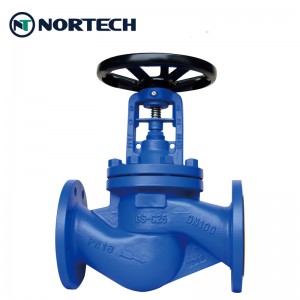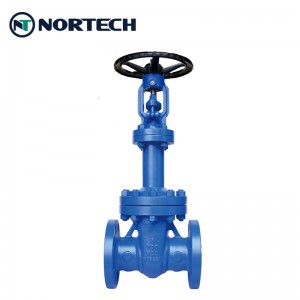Gate valves and globe valves are relatively commonly used valves. When choosing a gate valve or a globe valve, it is difficult for most users to make a correct judgment. So what is the difference between a globe valve and a gate valve, and how to choose it in actual use?
Generally speaking, in terms of valve selection in pipeline design, gate valves are usually used in liquid media, and stop valves are used in gas media. Both globe valves and gate valves are compulsory sealing valves. They both push the disc and valve seat to form a seal by rotating the valve, instead of relying on medium pressure to achieve the seal like a ball valve. The difference between a globe valve and a gate valve and the difference between their respective uses and dimensions : The structural length of the gate valve, that is, the length between the flange surfaces is shorter than that of the shut-off valve; the installation height and opening height of the shut-off valve are smaller than that of the gate valve. Although they are all angular strokes, the opening height of the shut-off valve is only Half of the nominal diameter, the opening time is very short, and the opening height of the valve is the same as the nominal diameter.
The difference in the flow direction of the medium: the gate valve is a two-way sealing valve, which can achieve sealing from both directions, and there is no requirement for the installation direction. The shut-off valve has an S-shaped structure. The shut-off valve has a flow direction requirement. The medium of the shut-off valve with a nominal diameter less than DN200 flows from below the disc to the top of the disc, and the medium of the shut-off valve with a nominal diameter of less than DN200 flows from above the disc to the valve. Below the flap. However, the electric shut-off valve adopts the method of inflow from above the valve clack. Since most stop valves flow from below the valve flap to the top, the opening torque of the valve can be effectively reduced, and the water hammer phenomenon caused by the opening vibration of the valve can be avoided. The difference in fluid resistance of the medium: when fully opened, the entire flow passage of the gate valve is transversely through, without any resistance, the medium has no pressure drop loss, and the flow resistance coefficient is only 0.08-0.12. Moreover, the fluid resistance coefficient of the shut-off valve is 2.4-6, which is 3-5 times the flow resistance coefficient of the gate valve. Therefore, the shut-off valve is not suitable for working conditions that require medium pressure loss.
The difference in the sealing surface structure: the sealing surface of the stop valve is perpendicular to the pipeline. When it is closed, if impurities in the medium stay on the seal, when the valve disc and the sealing valve seat form a seal, it is easy to damage the valve seat sealing surface and the gate valve The sealing surface has a wiping effect when the gate is descending, and the medium can be washed, and the damage of the medium impurities to the sealing surface is much smaller.
Post time: Jul-01-2021


